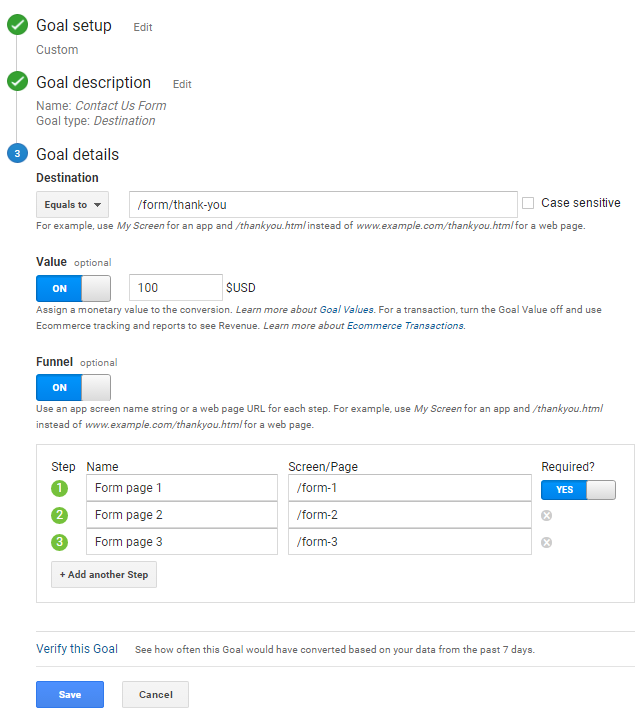Discover What Data Is Google Analytics Goals Unable to Track
Discover What Data Is Google Analytics Goals Unable to Track
Blog Article
Unveiling the Blind Destinations: Understanding What Google Analytics Goals Can not Measure
In the world of electronic analytics, Google Analytics stands as an effective device for tracking and assessing on the internet user interactions. Recognizing what Google Analytics goals can not gauge is critical for getting an extensive view of user actions and engagement.
User Behavior on External Operatings Systems
Comprehending just how users communicate on outside systems is important for maximizing online approaches. Exterior systems, such as social media networks, referral internet sites, and on the internet discussion forums, play a substantial duty in driving traffic to a company's internet site. By evaluating individual habits on these systems, organizations can obtain beneficial insights right into the efficiency of their advertising and marketing efforts and the choices of their target market.
One secret element of customer habits on exterior platforms is the recommendation source. By tracking where the customers are originating from, services can identify which systems are driving one of the most traffic to their web site. This details can help companies assign their sources a lot more successfully, focusing on the platforms that generate the very best results.

Offline Conversions and Interactions
Analyzing customer habits on exterior systems provides important understandings into online techniques; however, thinking about offline conversions and interactions is equally imperative for an extensive understanding of a business's general performance. While Google Analytics excels at tracking online interactions, it falls short in capturing the complete client journey that frequently includes offline touchpoints. Offline conversions, such as in-store purchases or phone queries, play a significant duty in several companies' success. Ignoring these communications can lead to an altered view of the performance of marketing campaigns and overall organization performance.

Attribution Beyond Last Click
When diving right into the realm of electronic advertising and marketing analytics, it becomes crucial to look past the solitary touchpoint of the last click for a more comprehensive understanding of attribution. While Google Analytics offers useful understandings right into individual behavior, counting entirely on last-click acknowledgment can be limiting - what data is google analytics goals unable to track. Attribution versions that exceed the last click supply a more nuanced view of the client trip, considering all the touchpoints that result in a conversion
Acknowledgment past the last click enables marketing experts to assign credit score to various communications along the conversion path, providing a clearer picture of the efficiency of different advertising networks. By discovering multi-touch attribution models such as straight, time degeneration, or position-based acknowledgment, companies can much better designate their advertising budgets and enhance their approaches for optimal this post influence.
Recognizing the influence of each touchpoint in the conversion procedure is critical for making notified decisions and optimizing ROI. By welcoming acknowledgment beyond the last click, services can get deeper understandings into consumer actions and customize their advertising and marketing initiatives better.
Cross-Device and Cross-Browser Tracking

In a similar way, cross-browser tracking complements cross-device tracking by catching individual habits as they change in between different internet browsers. Comprehending how individuals communicate with websites on numerous browsers can aid marketing experts maximize their on the internet experiences to make certain consistency and functionality you can try this out throughout different platforms.
Qualitative Data and Individual Intent
Recognizing individual intent through qualitative data analysis is essential for creating targeted digital marketing techniques that resonate with the needs and choices of the target market. Qualitative information offers insights into the 'why' behind customer activities, dropping light on motivations, emotions, and choices that quantitative information alone can not record. By assessing user comments, remarks, and communications, marketing experts can uncover beneficial information concerning user intent, allowing them to customize their messaging, content, and offerings to better straighten with what their target market is seeking.
Qualitative information likewise helps in understanding the context in which individuals involve with an internet site or application. This contextual understanding allows online marketers to develop more pertinent and tailored experiences, inevitably driving greater engagement and conversion rates. By delving right into user intent through qualitative information evaluation, businesses can acquire a much deeper understanding of their target audience, bring about more effective advertising strategies that meet users' expectations and demands.
Final Thought
Finally, Google Analytics objectives have constraints in gauging individual habits on exterior platforms, offline conversions, acknowledgment past last click, cross-browser and cross-device monitoring, and qualitative data connected to individual intent. what data is google analytics goals unable to track. It is crucial for companies to be mindful of useful content these dead spots in order to supplement their data analysis with various other devices and techniques to obtain a more extensive understanding of their audience and enhance their total electronic advertising techniques
By evaluating customer behavior on these platforms, organizations can get valuable insights into the performance of their marketing initiatives and the choices of their target audience.
Assessing individual habits on outside systems offers beneficial insights into online methods; however, considering offline conversions and communications is similarly critical for a comprehensive understanding of a business's total performance.In digital marketing analytics, relocating past last-click attribution to check out cross-device and cross-browser monitoring is vital for getting an all natural understanding of user interactions throughout various platforms and gadgets. By analyzing customer comments, remarks, and interactions, marketing professionals can reveal beneficial info regarding customer intent, permitting them to tailor their messaging, web content, and offerings to much better straighten with what their audience is looking for.
By delving into customer intent via qualitative data analysis, organizations can acquire a deeper understanding of their target audience, leading to much more effective advertising approaches that satisfy users' expectations and needs.
Report this page